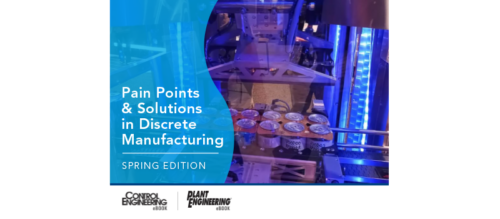Picking pizza pickers
A good pizza maker is hard to find; robotics can help. Last year Italian system integrator, Panidea, a pizza producer in Italy, asked Vortex Systems to design an automated packaging system for frozen pizzas.
A good pizza maker is hard to find; robotics can help. Pizza makers have to know how to prepare the dough, how long to let it rise, how to shape it without patting, to choose the proper trimmings, such as tomatoes, mozzarella, herbs, and cheese. And then you have to cook it, according to tradition, in a wood-burning oven.
While an expert pizzaiolo might prepare a pizza in a few minutes, an industrial pizza machine must turn out hundreds of pizzas in the same time frame. No one would claim that frozen pizza tastes quite the same as that prepared fresh in a brick oven, but frozen pizza can bring a lot of satisfaction to those who want the taste of Italy and don’t have an authentic pizzeria nearby.
For an industrial pizza producer, making the pizza is only the first part of the problem. It must then be frozen, sorted, wrapped, and packaged in accordance with regulations for freshness and hygiene, and must not lose attractiveness during this process. For example, if the pizza starts out round, it should still be round when it arrives in the customer’s kitchen. If cheese has been sprinkled on top, it should still be there when the customer opens the package—not be left behind on the factory floor.
Last year Italian system integrator, Panidea, a pizza producer in Italy, asked Vortex Systems , to design an automated packaging system for frozen pizzas. Pizzas coming from a freezer were to be loaded into a flow-pack machine before going to the cartoning machine. The major challenge was to handle three products: triangular, circular, and oval pizzas. Furthermore, the customer wanted a flexible and scaleable system, where new products could be introduced and the capacity increased over time.
A specific challenge with pizzas is that they are not arranged neatly on the line and may not be perfectly uniform in shape. The pizzas also must be handled delicately with the gripper: items on top of the pizza mustn’t be lost in the trip from line to the package.
To meet these requirements, Vortex Systems to use ABB’s IRB340 FlexPicker in conjunction with ABB’s PickMaster software for vision guidance. The FlexPicker is a parallel kinematics robot with picking rates exceeding 120 items per minute while picking and placing products one by one. Since all the motors and gears are fixed on the base of the robot, the mass of the moving arms is limited to a few kilograms. This means that accelerations above 10 g can be achieved.
Since the system packages open food, it is mainly designed in stainless steel for wash down standards. This is a very important requirement in food production.
The loading system contains two FlexPicker robots, each with a camera, and a PickMaster. The layout has room for a third robot at the end of the line, should Panidea wish to upgrade the system’s capacity.
The key to the success of this pizza loading system, which is the first of its kind in Italy, is the gripper design. Although single grippers are simpler and less expensive than multi-grippers, the high capacity and product variation makes gripping technology very important. In this project, two types of grippers are used: a finger-like gripper and a faster vacuum gripper.
Each robot has a capacity of 60–80 pizzas per minute depending on the type of gripper being used. If a third robot is added to the line, the maximum capacity of the system will be 240 pizza portions per minute.
The vision system gives the robots eyes. Pizzas are arranged randomly on a conveyor belt and the robots need to know their location to pick them up. Incorporating a Cognex vision system, the PC-based PickMaster vision-software package allows programming of up to eight robots, cameras and conveyor belts.
The cameras and the vision system locate the pizzas and feed the positions to the robot controller. The products don’t have to be guided or pre-arranged, as they would need to be with conventional automation systems. Instead, they can be fed on an ordinary flat conveyor belt for all product variants; the robots and vision system take care of the rest. The result is a cleaner robot-based system with fewer mechanical peripherals.
Since grippers need to be changed to accommodate different batches, downtime and loss of production are minimal. The flexibility provided by this approach is very valuable to the customer, since it allows the optimal mix of products to be produced depending on consumer demand. The fact that the robot is top-mounted means it doesn’t restrict access to the robot line.
According to personnel at Panidea, the FlexPicker system installation went very smoothly and took only two weeks. According to Panidea engineers, this is probably the only way to automate this application with flexibility and speed. The only equally flexible alternative to the FlexPickers would have been a much more costly solution based on manual labor. The picking pizza installation is an excellent example of how standard robots and application software result in short payback for a food producer. Panidea is already planning to continue the expansion of the concept.
—Edited by C.G. Masi , senior editor
Do you have experience and expertise with the topics mentioned in this content? You should consider contributing to our CFE Media editorial team and getting the recognition you and your company deserve. Click here to start this process.


